7/24
0 386 212 91 91
- bilgi@etcimkasapbeefsteak.com
- Ahievran, Mehmet Ali Yapıcı Blv. No:32 Merkez/Kırşehir
7/24
0 386 212 91 91
Taze & Kaliteli ETLER
Beef&Steak
Taze & Kaliteli ETLER
ETCİM KASAP
Taze & Kaliteli ETLER
Beef&Steak
Taze & Kaliteli ETLER
ETCİM KASAP
Taze & Kaliteli ETLER
Beef&Steak
Taze & Kaliteli ETLER
ETCİM KASAP


0
+
yıllık
ustalık

ETcim KASAP Beef&Steak
EN İYİ ET
“Etin en kalitelisi” prensibiyle 1963 yılından beri dededen toruna sürdürdüğümüz bu hizmetimize, işletmemizi online satışa sunmaktan gurur duyuyoruz. Kendi çiftliğimizde yetiştirdiğimiz yerli danalarımız, Trakya ve Balıkesir yöresine ait kıvırcık kuzuların etlerini özenle işleyerek önce tezgahımıza sonra mutfağınıza ve sofranıza lezzet katıyoruz.
SADECE ORGANİK ÜRÜNLER
PROFESYONEL ET KESİM
- Bütün müşterilerimiz bizim için özeldir.
- Müşterilerimize %100 organik et sunmaktır.
- Bütün etlerimiz yerlidir.



Dana Eti








































Kuzu Eti





















Tavuk Eti















pirzola
T-Bone steak
Premium Tomahawk Steak
Kaburga
Köfte

Et Çeşitleri
Fiyatlarımız
- Dana
- ETCİM Lezzetler
- Kuzu
- Şarküteri
- Tavuk

Adana Kebap (1 kg)
Dana
1KG
1.050,00 TL

Beyti Kebap (1 kg)
Dana
1KG
1.050,00 TL

Dallas Steak (1 kg)
Dana
1KG
1.300,00 TL

Dana Antrikot (1 kg)
Dana
1KG
1.100,00 TL

Dana Bonfile (1 kg)
Dana
1KG
1.300,00 TL

Dana Brisket (1 kg)
Dana
1KG
800,00 TL
1KG
930,00 TL
1KG
1.900,00 TL
1KG
1.030,00 TL
1KG
680,00 TL
1KG
1.000,00 TL

Dana Kuşbaşı (1 kg)
Dana
1KG
750,00 TL

Dana Lokum (1 kg)
Dana
1KG
1.300,00 TL

Dana Şaşlık (1 kg)
Dana
1KG
1.300,00 TL
1KG
1.300,00 TL
1KG
750,00 TL

Kasap Burger (1 kg)
Dana
1KG
900,00 TL

Kasap Köfte (1 kg)
Dana
1KG
900,00 TL

Kaşarlı Köfte (1 kg)
Dana
1KG
900,00 TL

Dana Dinlendirilmiş Antrikot (1 kg)
ETCİM Lezzetler
1KG
1.900,00 TL

Dana Tereyağlı Antrikot (1 kg)
ETCİM Lezzetler
1KG
1.100,00 TL

Dana wagyu yerli antrikot
ETCİM Lezzetler
1KG
3.000,00 TL

Kuzu Pirzola
ETCİM Lezzetler
1KG
1.300,00 TL

Taze Otlu Antrikot (1 kg)
ETCİM Lezzetler
1KG
1.900,00 TL
1KG
1.300,00 TL

Kuzu İncik (1 kg)
Kuzu
1KG
1.050,00 TL
1KG
830,00 TL

Kuzu Kemiksiz (1 kg)
Kuzu
1KG
1.000,00 TL

Kuzu Kol (1 KG)
Kuzu
1KG
800,00 TL

Kuzu Külbastı (1 kg)
Kuzu
1KG
1.200,00 TL

Kuzu Kürek (1 kg)
Kuzu
1KG
850,00 TL

Kuzu Küşleme (1 kg)
Kuzu
1KG
1.400,00 TL

Kuzu Lokum (1 kg)
Kuzu
1KG
1.450,00 TL

Kuzu Pirzola
Kuzu
1KG
1.300,00 TL

Dana Kavurma 1 Kg
Şarküteri
1KG
850,00 TL

Kasap Sosis (1 kg)
Şarküteri
1KG
1.200,00 TL

Kasap Sucuk (1 kg)
Şarküteri
1KG
750,00 TL

Osmanlı Sucuk (1 kg)
Şarküteri
1KG
800,00 TL

Tavuk Baget (1 KG)
Tavuk
1KG
200,00 TL

Tavuk But (1 KG)
Tavuk
1KG
180,00 TL

Tavuk Kanat (1 KG)
Tavuk
1KG
320,00 TL

Tavuk Pirzola (1 kg)
Tavuk
1KG
250,00 TL

Tavuk Sarma (1 kg)
Tavuk
1KG
250,00 TL

Tüm Tavuk (1 kg)
Tavuk
1KG
130,00 TL

Yaprak Kanat (1 KG)
Tavuk
1KG
400,00 TL
Biftek
Bonfile
Kontrfile
Pirzola
tranç
Antrikot




